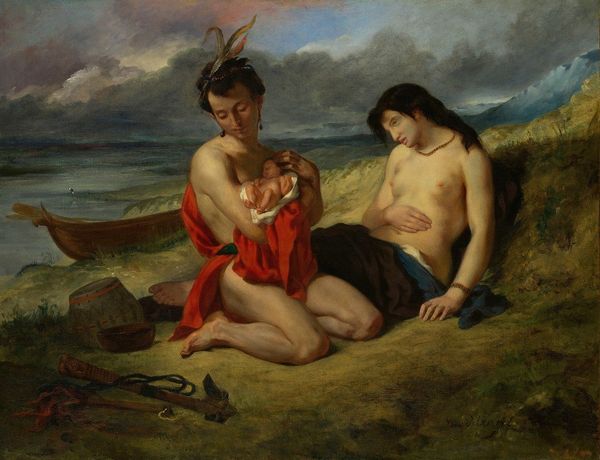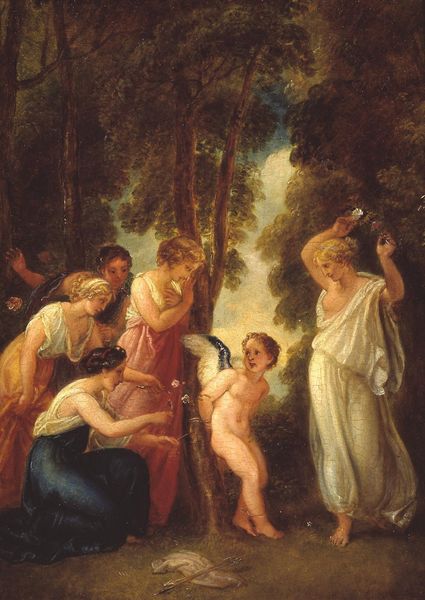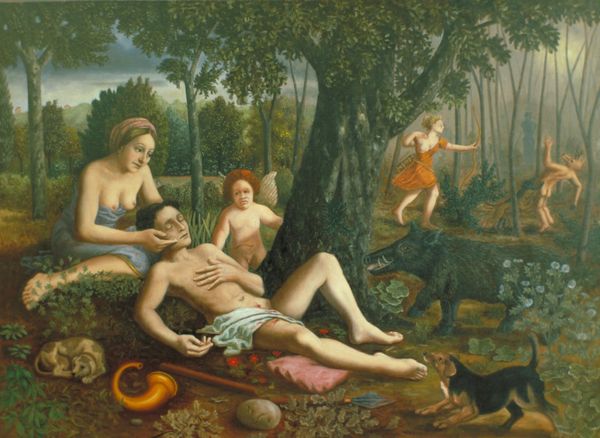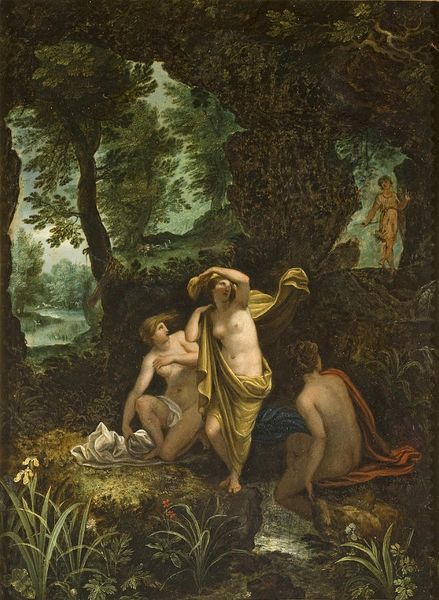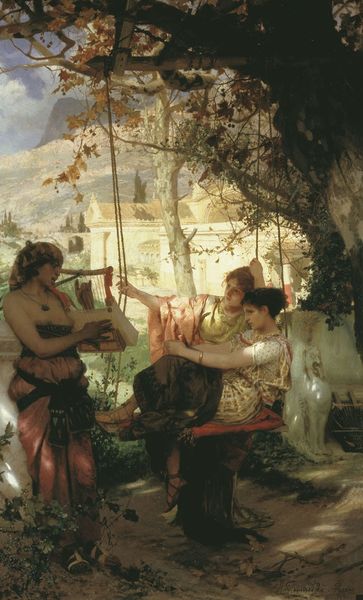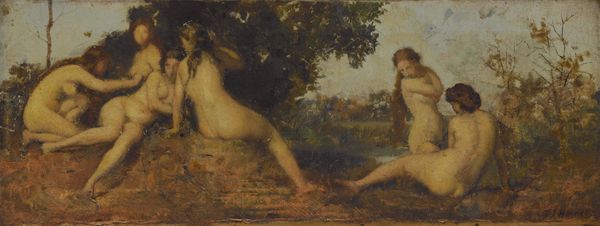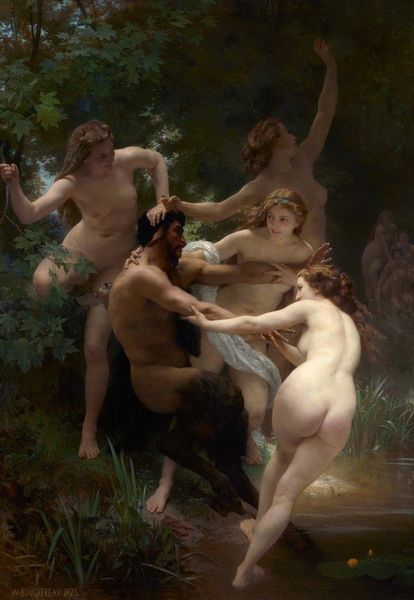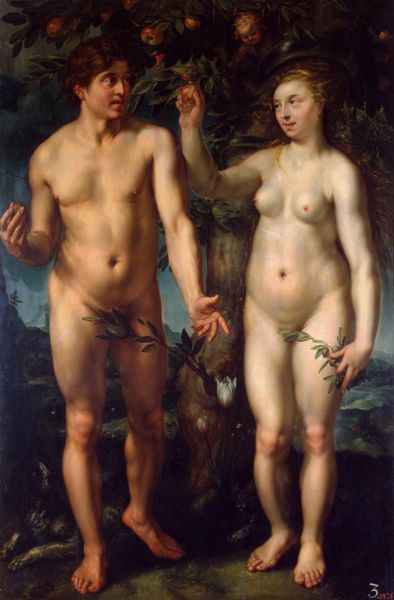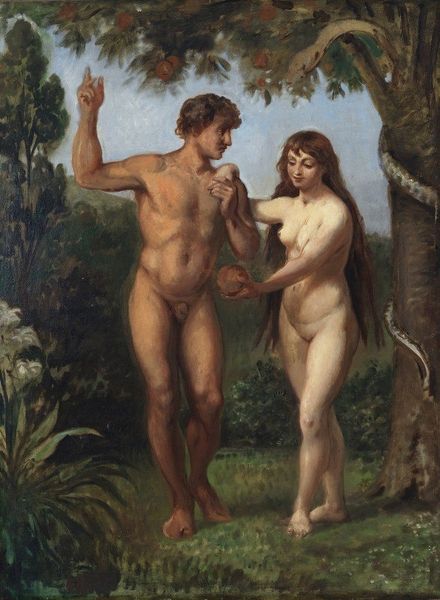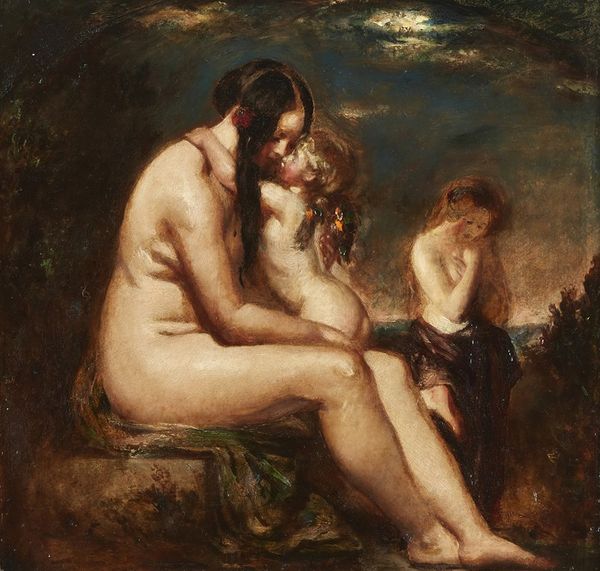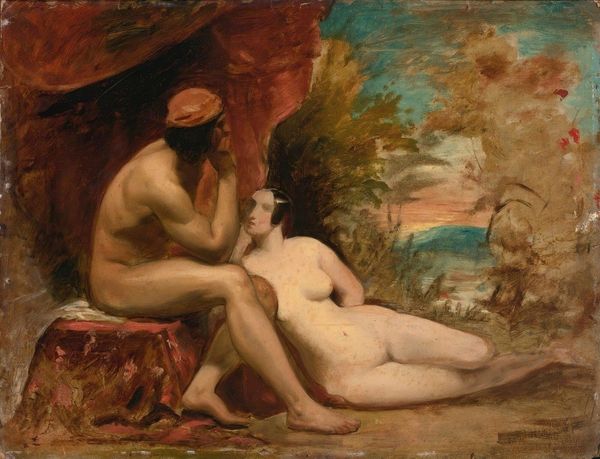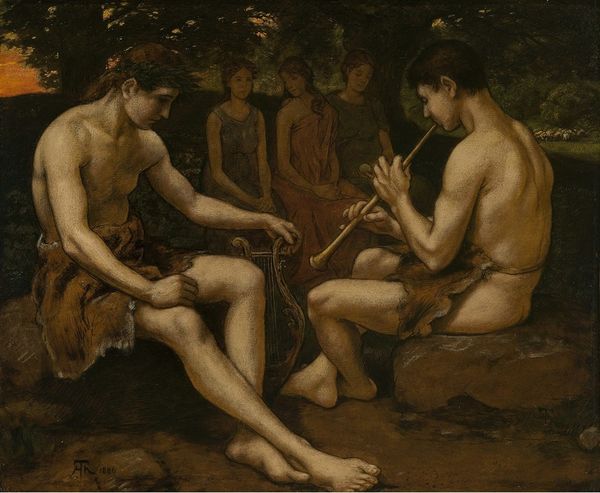
painting, oil-paint
#
gouache
#
water colours
#
narrative-art
#
painting
#
oil-paint
#
fictional-character
#
landscape
#
figuration
#
underpainting
#
mythology
#
human
#
painting painterly
#
academic-art
Dimensions: 235.5 x 134.5 cm
Copyright: Public domain
Curator: Jean-François Millet painted this charming oil-on-canvas titled "Spring (Daphnis and Chloë)" in 1865. What's your immediate impression? Editor: It's like stepping into a humid, sun-dappled daydream. The texture! That almost palpable stillness. I can almost smell the blossoms. Though, is that a touch of melancholy I detect, too? Curator: Perhaps. The composition utilizes layered oil glazes over a preparatory underpainting, a common technique for achieving luminosity. The landscape isn't just a backdrop; it's intrinsically linked to the narrative of youthful love and burgeoning sensuality. I’m wondering what statement it makes regarding social relations or labor in mid-19th century France. Editor: The figures, especially Chloë, do seem to emerge almost organically from the setting, bathed in a soft glow. But is it idealizing rural simplicity a bit much? Is Millet subtly critiquing the artificiality of urban life through this lens? I am interested by the nest they're holding...a bit obvious isn't it? Curator: That interplay of artifice and nature is a key tension, I think. Millet himself came from a farming background and often depicted rural life, though this scene, drawn from Longus's novel, is steeped in classical mythology and its conventions. Consider, too, the labor of procuring materials to produce a scene of supposedly leisure and plenty. How were pigments sourced, ground and bound, and under what conditions? The canvas is meticulously crafted; it is very clearly not some scene done en plein air in minutes... Editor: Good point! It does raise questions. This isn't just observation; it's deliberate construction. A curated eden, almost! But, regardless of social context, there's such vulnerability captured in those faces and it touches me. A simple shared moment with that bird nest seems special to me. Curator: Precisely. So, even amidst idyllic beauty, hints of the tangible, laborious world press in. That goat behind them? Even the tools discarded at their feet. They exist within the cycle of rural life and labour. Editor: Indeed, it's that push and pull that makes it so intriguing. Thank you for the insight! It brings it alive even more. Curator: A valuable exchange that is key in analyzing the value of labor and idyllic art production in the modern world. Thank you for being here!
Comments
No comments
Be the first to comment and join the conversation on the ultimate creative platform.

